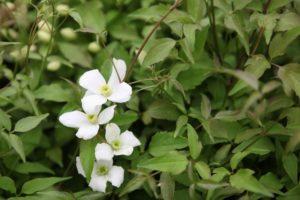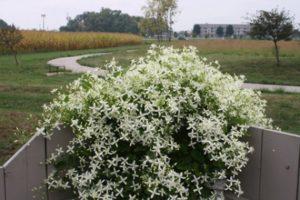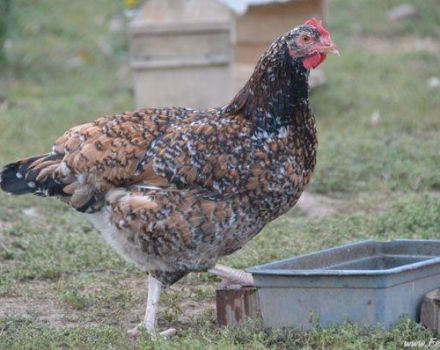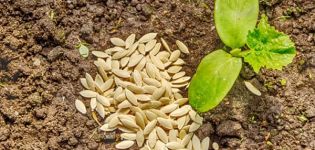Description and group of pruning clematis of the Miss Bateman variety, planting and care
This liana with a spectacular, beautiful, varied flowering is, without exaggeration, an adornment of any garden or suburban area. Breeders have bred many varieties for every taste, new ones are constantly being created. But there are those that have been successfully grown for several centuries. This is exactly what clematis with the name Miss Bateman belongs to.
Description and characteristics of Clematis Miss Bateman
This is a classic, ancient clematis variety, bred by English breeders. The applicant is Charles Noble, clematis bred back in 1871. He was named after the daughter of the famous British botanist - James Bateman. It is a vigorous and deciduous liana, up to 2-3 meters high, with trifoliate, juicy green leaves.
Can climb trellis, supports, clinging to them with antennae. Differs in large (up to 15 centimeters in diameter), delicate white flowers with a slight pinkish tint and a burgundy core. Adult clematis is characterized by abundant flowering from June to September.
Frost resistance, drought resistance
The Miss Bateman variety is characterized by high drought and frost resistance. Clematis can withstand temperatures down to -35 C degrees, USDA zone 4.
Disease and pest resistance
Clematis Miss Bateman is moderately resistant to disease and pests. To maintain health, it is desirable to carry out preventive treatments.
Main positive and negative aspects
Clematis Miss Bateman has not only strengths, but also weaknesses that gardeners need to know.
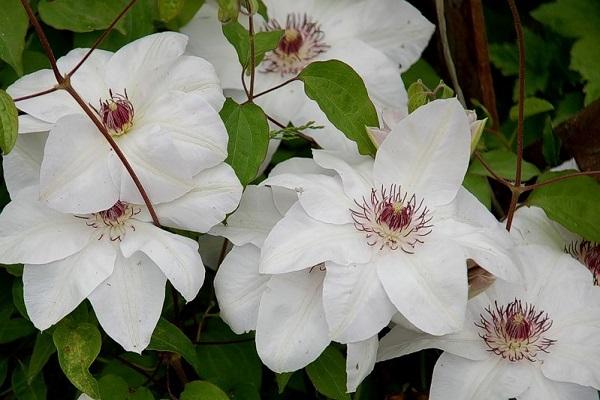
Strengths:
- unpretentious to various growing conditions, resistant to extreme heat and drought;
- high decorative qualities of clematis;
- high resilience, frost resistance and disease resistance;
- abundantly and long-flowering clematis variety;
- shows high decorative effect even on poor soils;
- the ability to cling to supports;
- powerful force of growth.
Weaknesses:
- the first 3 years of life, the bush grows the root system and vegetative mass, and only then abundant flowering begins;
- in the hot season, especially in the south, leaves and flowers can burn.

The nuances of planting a flower
For a rapid growth of vegetative mass, good root development and general health, clematis must be properly planted.
Choosing a place and time for boarding
Planting clematis with ACS (open root system) is carried out starting from April, early May, depending on the region. But, in any case, it is advisable to do this before the onset of heat. In the fall, the plant is planted starting in early September. With ZKS (closed root system), clematis can be planted throughout the season.
The liana is planted in places well-lit by the sun; in the southern regions it is possible to plant in diffused shade and even partial shade.
But varieties with light flowers, such as Ms. Bateman, prefer to grow in a sunny spot or lightly shaded in the south. They can be planted near gazebos, fences, walls of houses. But it is important to place clematis so that water from the roof does not drain onto it during rain - this will lead to its death. The landing site must be well protected from the winds.
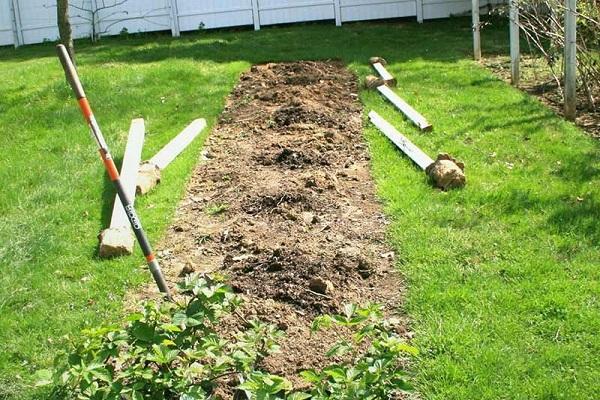
Selection of seedlings
When choosing seedlings with an open root system, an examination is carried out for diseases and rot. The roots should be yellow-brown or orange in color, healthy, firm, more than 10 centimeters long. The cuttings must have at least a few root buds. When buying seedlings with a closed root system, choose those in which the roots already crawl out through the drainage holes and have 2-3 strong young lashes.
Soil requirements
Clematis prefer air and water permeable, light, nutritious soil, with a neutral or slightly acidic pH level. Heavy, clayey soils are categorically unsuitable. They absolutely do not tolerate stagnant water, this will lead to the appearance of root rot and the rapid death of the entire liana.
How is landing
When planting rooted cuttings or seedlings with an open root, a planting hole is dug, 40-50 centimeters deep. A mound of such a height is poured at the bottom so that after planting, the growth point of clematis is deepened by 7-10 centimeters. This is done for the abundant growth of shoots from dormant root buds. The seedling is placed on the top of the mound, the roots are spread along its sides. When landing, they should not be tangled or kinked.

Then the hole is covered with a substrate, slightly compacted and well spilled with water. It will not be superfluous to mulch the soil immediately after planting. When planting seedlings with a closed root, after removing from the pot, the roots are untangled and straightened from below. The entire earthen lump is placed in the landing hole, it is also deepened to 10 centimeters, covered with earth, tamped down and watered with water.
Care rules
For abundant, long-lasting flowering, Miss Bateman clematis requires certain care rules.
Watering and feeding
Clematis responds positively to the introduction of organic matter (rotted manure, compost), showing an active growth of vegetative mass. It will be useful to introduce into the planting hole and dust the root system, as well as the growth points before planting with wood ash. This is not only a potash fertilizer, but also a means for the prevention of various rot.
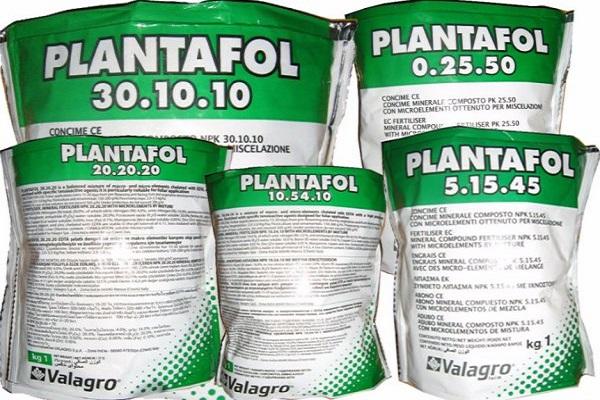
Clematis, especially large-flowered and profusely blooming, need regular and full feeding to maintain high decorativeness. At the beginning of the season, for an active start, the liana needs more nitrogen, and before and at the time of flowering, more phosphorus and potassium. For example, Plantafol 10/30/10 is good to use at the beginning of the growing season. Potassium is especially important for the saturation and expressiveness of colors. Plantafol 5.15.45 and 0.25.50 are used. It is useful to combine root dressing with spraying plants on the leaf.
Pruning
Clematis Miss Bateman II has a pruning group. This is the so-called partial or weak pruning - it consists in the spring shortening of overwintered shoots.Usually 10-15 knots are left from the soil level.
Mulching and loosening
Clematis like to keep their "head" in the sun, and "legs" in the shade. Simply put, they do not like direct sunlight falling on the root zone, drying out and overheating the soil. An excellent option would be to mulch the soil with a thick layer of organic matter in the root zone.

In addition to protecting against weeds, overheating and rapid evaporation of moisture, mulch, as it decays, enriches the soil with useful substances. It will be useful to plant ground cover plants and flowers with a shallow root in the "legs" of clematis. For example, marigolds, in addition to aesthetic pleasure, also benefit clematis, closing the root zone and protecting it from nematodes.
Preparing for the winter period
Pre-winter preparation consists of sanitary pruning, which is carried out in late October, early November. All dried, diseased leaves and the remains of flowering are cut off. After that, they are treated with copper-containing fungicides, for example, copper sulfate. Then the bush is removed from the trellis or unhooked from the supports, laid on the ground.
Clematis is not as afraid of frost as dampness and moisture, so you should not try too hard with shelter. It is advisable not to lay the whips on bare ground, but to make a flooring of branches, boards, pine litter or to spread agrofiber. On top of the clematis lashes, they are covered with a breathable material such as agrofibre to avoid damping out. Before sheltering under the bushes, poison for mice is scattered.
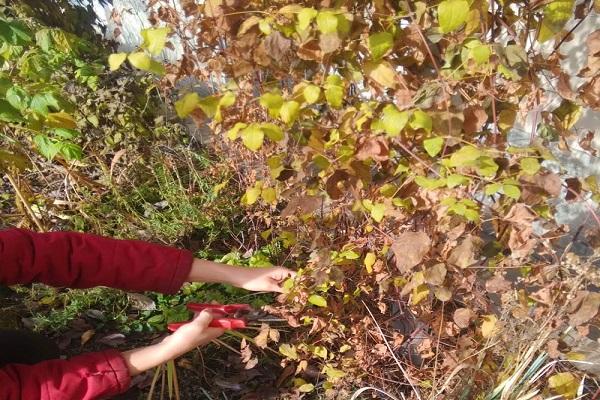
Diseases, pests, prevention
Clematis are affected by various diseases. These are verticillary wilting (wilt), various spots, gray and powdery mildew, fusarium, root cancer and rust. To prevent the occurrence of diseases, they regularly carry out sanitary cleaning and pruning, and also avoid overflowing vines. It is necessary to carry out 2-3 treatments with fungicides per season.
For example, spraying vines with copper sulfate, Ridomil Gold is alternated and spilled under the root with a Fundazole solution. Various pests also attack clematis. These are aphids, spider mites, various caterpillars, slugs, beetles and bears. For control and prevention, they are sprayed several times a season with Actellik, Calypso, Confidor, Aktofit and spilled under the root with a solution of Aktara, Nurell D, Antichrushch.
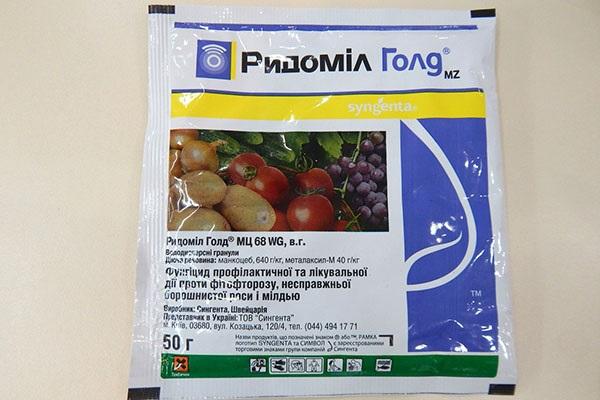
Reproduction methods
Clematis Miss Bateman reproduces in a variety of ways besides sowing seeds. With this option, the grade is not preserved.
Layers
To obtain seedlings, Miss Bateman's clematis lash, after the beginning of its woodiness (from the beginning of summer), is dropped to a depth of 5-7 centimeters near the bush. The lash is fixed to the ground, sprinkled with earth, spilled with water and mulched. By autumn, a new seedling appears from each node of the lash. It is important for root formation to regularly moisten the soil.
Cuttings
The breeding method of clematis is used both in large nurseries and in amateur gardening. Cuttings with one, less often - two knots are cut from matured, stiff lashes. The lower cut is made at an angle, at a distance of 5-7 centimeters from the knot. Upper - 1-2 centimeters at a right angle. The lower cut is dipped in powdered rooting stimulants, such as Kornevin or the new, effective stimulant in the form of a gel - Clonex.

Vine leaves are cut off by two-thirds, after the cuttings are immersed before the beginning of the node into a light, aerated substrate with the addition of agroperlite (up to 30% of the volume). Rooting of clematis occurs in a greenhouse, a greenhouse. Often, gardeners simply put a cut plastic bottle on a planted stalk on top.
By dividing the bush
This type of reproduction is quite laborious, this is due to the digging of a large volume of roots from the ground. After digging, the Miss Bateman bush is divided into several parts - you should get a piece of stem with a bunch of roots.With such a reproduction of seedlings, although not a lot, they turn out to be quite strong.
Application in landscape design
The clematis variety is widely used to decorate garden plots, in landscape design. Liana looks spectacular both solo and in group plantings. Miss Bateman looks especially beautiful in combination with clematis, blooming blue, red and dark flowers, as well as roses. It is used for braiding pergolas, gazebos, arches, decorating unsightly places or buildings. Compatible with many ornamental plants - spireas, hosts, lilacs, heucheras and barberries.
